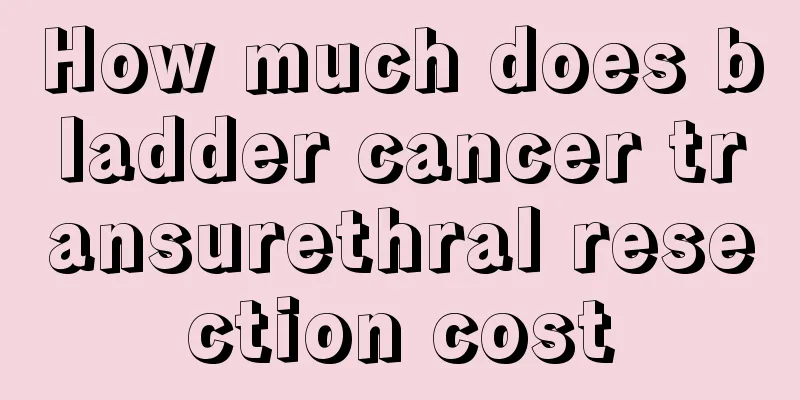Is purpura serious?

|
Purpura is a health problem that troubles many people and is also a disease that greatly affects the patient's systemic health. It can be said that purpura is quite serious and needs timely treatment. If purpura is not treated in time and worsens, not only will the difficulty of treatment increase, but the harm will also increase. Below, I will introduce in detail the harm of purpura to various parts of the body! 1. Kidney symptoms What are the symptoms of Henoch-Schonlein purpura? Nephritis is the most common complication of this disease, with an incidence rate of 12 to 65%. It usually occurs within 1 to 8 weeks after the onset of purpura, with varying severity. Some cases are only short-term hematuria, while others quickly progress to renal failure, but this is rare. The main manifestations are acute glomerulonephritis symptoms such as hematuria, proteinuria, tubular urine, edema and hypertension. A few may develop into chronic nephritis, nephrotic syndrome, and some cases may develop into chronic renal failure. The above four types (skin, joints, abdomen, and kidneys) can exist alone. When two or more types exist together, they are called mixed types. 2. Skin symptoms What are the symptoms of allergic purpura? The typical rash is brown-red maculopapules, which protrude from the skin surface, do not fade when pressed, appear alone or fused together, and are symmetrically distributed. It is more common on the extensor side of the limbs and buttocks, rarely invading the trunk, and may be accompanied by itching or pain. It appears in batches and may leave pigmentation after it disappears. In addition to purpura, complications such as urticaria, angioedema, erythema multiforme or ulcer necrosis may also occur. Occasionally, purpura may occur on the oral mucosa or conjunctiva of the eyes. 3. Joint symptoms What are the symptoms of Henoch-Schonlein purpura? The joints may have mild pain, obvious redness, swelling, pain and movement disorders. The lesions often involve large joints, most commonly the knees, ankles, elbows, wrists, etc. They may be migratory and are often misdiagnosed as "rheumatism." It is mainly a periarticular lesion, which may recur without leaving any joint deformity. 4. Abdominal symptoms What are the symptoms of Henoch-Schonlein purpura? Abdominal pain is common, mostly colic, caused by blood infiltration into the intestinal wall. The pain is obvious in the navel and right lower abdomen, and may also spread to the entire abdomen, but there is generally no abdominal muscle tension and the tenderness is mild. It may be accompanied by nausea, vomiting, diarrhea and black stools. Irregular intestinal peristalsis may lead to intussusception, and a mass may be palpable, which is more common in children. Intestinal perforation may occasionally occur. If it is not accompanied by skin purpura, it is often misdiagnosed as "acute abdomen". |
>>: Is thrombocytopenia anemia?
Recommend
Does anal protrusion mean hemorrhoids? It turns out these are the pathogenic factors
Many people often feel symptoms of anal prolapse....
Can white vinegar, red dates and rock sugar help lose weight?
We all know that red dates are rich in nutritiona...
Is it okay to get pregnant during kidney cancer?
Is it okay to get pregnant during kidney cancer? ...
How much wolfberry is best to eat every day?
Wolfberry is quite common. It can be used as a me...
What is the self-treatment method for allergic rhinitis?
As we all know, allergic rhinitis is extremely ha...
Risks of ovarian tumor surgery
Risks of ovarian tumor surgery 1. However, during...
A great way to quickly reduce eyelid swelling
Early swelling is a very common situation in dail...
Is it necessary to take lenvatinib in the middle and late stages of liver cancer? Pay attention to these matters when taking liver cancer medication
Lenvatinib generally refers to lenvatinib mesylat...
What are the symptoms of lung cancer in the early stage? Several common symptoms of lung cancer in the early stage
Chest pain is a common early symptom of lung canc...
Why does my right eye hurt?
The pain in the right eye may be caused by eye di...
Can I wash my face with soap?
Soap has many functions. It can clean dirt. If us...
What is skin cancer
Skin cancer is the impact and damage caused by ma...
What is the use of expired Coke
If the cola you bought at home is out of its shel...
I feel uncomfortable and want to vomit. What's going on?
As the saying goes, worrying will turn your hair ...
Can ordinary mice get plague?
In daily life, mice are a relatively common anima...









